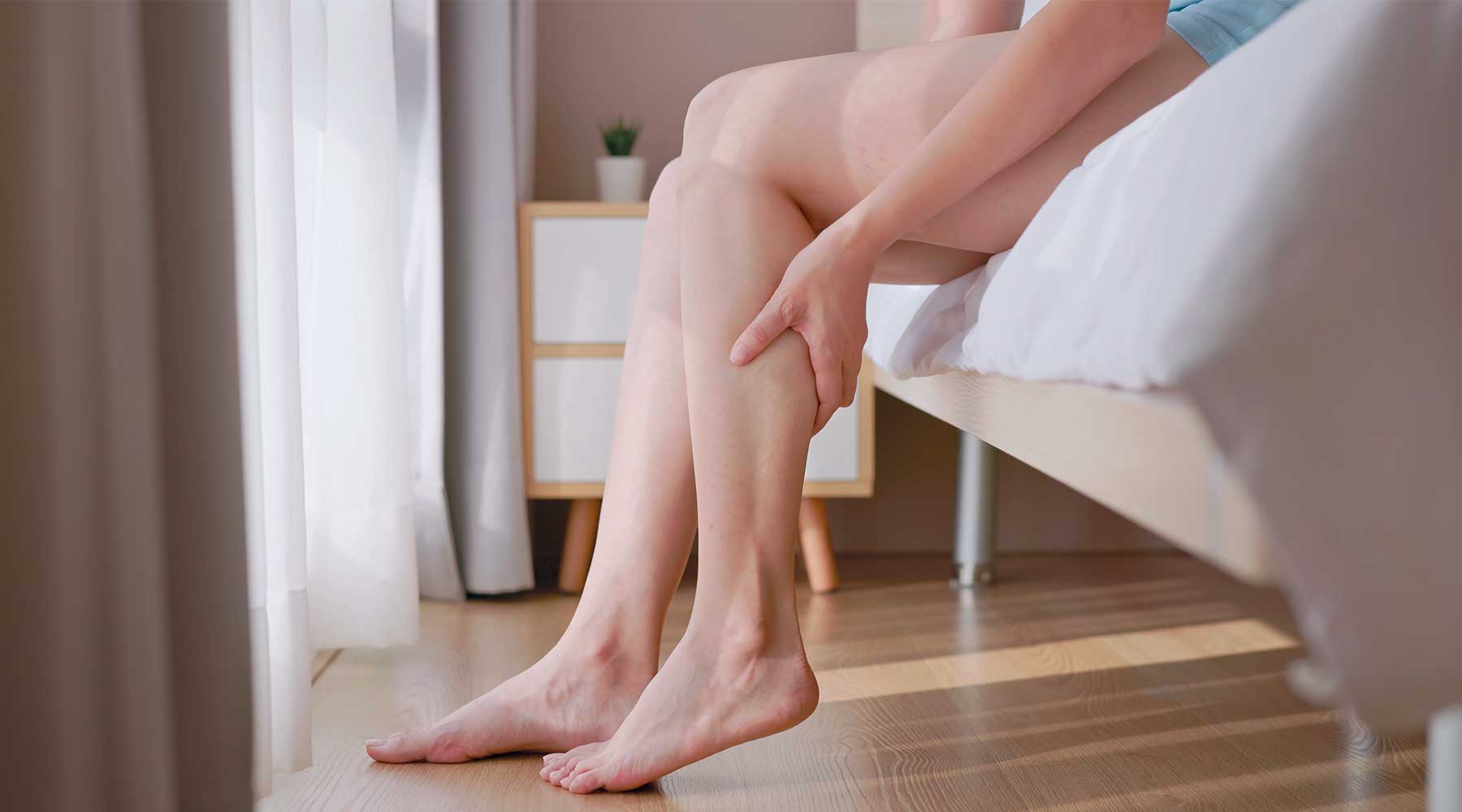
The Restless Legs Syndrome (RLS) and sleep
Restless Legs Syndrome (RLS) is a widespread condition that not only affects health but also sleep. Here you can find out why those affected experience a painful urge to move their legs and how sleep can be improved with RLS.
Table of contents
-
Restless Legs Syndrome (RLS)
-
Cause, Symptoms and Consequences of RLS
-
symptoms
-
Causes & Influencing Factors
-
-
RLS as a sleep disorder
-
Therapy & Help
-
Conclusion
1. Restless Legs Syndrome (RLS)
Restless legs syndrome is a neurological disorder that affects around 3% - 10% of people. They suffer from unpleasant sensations in the legs, arms or back, which are often described as painful or cramp-like pulling, tingling, stabbing or tearing. In addition, there is usually an intense urge to move the legs. The symptoms can appear on one side, on both sides or alternately on one side or the other, and are particularly common in the evening and at night. Another typical symptom of RLS is that the pain increases when resting or lying down and can be relieved by changing position or moving the affected areas.
Due to the increased need to move and the pain, which occurs particularly in the evening, those affected are often unable to relax. This also significantly disrupts sleep and leads to sleep disorders, which quickly lead to a severe lack of sleep, daytime tiredness and increased exhaustion. Restless Legs Syndrome is therefore a serious illness that can severely affect health and well-being in several ways.
2. Symptoms, Causes & Consequences of Restless Legs Syndrome

symptoms of RLS
The symptoms often occur in the evening or at night and are described differently by those affected. RLS is generally characterized by the following signs:
-
Unpleasant to painful sensations in the legs and/or arms, ranging from mild tingling to cramp-like pain
-
Strong urge to move, which occurs more frequently when sitting or lying down
- The symptoms occur frequently or only at night and can be alleviated by moving the affected areas
Causes & Influencing Factors for RLS
Although many people suffer from RLS, the cause of the unpleasant leg pain is not yet fully known. One possible explanation could be a disturbed dopamine metabolism in the brain. Dopamine is a neurotransmitter that transmits motor stimuli in the body and thus helps regulate movement control. RLS also often occurs together with a iron or vitamin B12 deficiency, impaired kidney function or during pregnancy. Taking certain medications can also make the symptoms worse. However, what exactly is behind this still needs to be investigated further.
Possible causes & influencing factors at a glance
-
Reduced or weakened kidney function
-
iron deficiency and/or vitamin B12 deficiency
-
nerve or joint damage
-
pregnancy
3.RLS as a sleep disorder

Restless Legs Syndrome can also be described in a broader sense as sleep disorder The pain and the strong urge to move, which occur primarily when resting and at night, quickly lead to difficulty falling asleep or difficulty sleeping through the night. Those affected cannot relax and fall asleep in the evening or often wake up from sleep and have to get out of bed to reduce the pain by moving and stretching the affected parts of the body.
The constantly interrupted sleep structure then naturally prevents those affected from getting enough deep sleep and regenerating sufficiently, so that the RLS symptoms often daytime fatigue, exhaustion and chronic lack of sleep It is all the more important to see a doctor in this case and counteract the symptoms with appropriate treatment.
4. Therapy & Help
Because the exact cause of the disease is unknown, restless legs syndrome cannot be completely cured. However, it is possible to alleviate the symptoms and better regulate the urge to move in the evening. Controlling and normalising iron metabolism or balancing the dopamine level in the brain have proven to be helpful therapies in many cases. However, you should only take iron supplements or medicines containing dopamine in consultation with your doctor.
In addition to drug therapy, those affected can also take active steps to combat their pain themselves. Sufficient physical exercise in everyday life, cold therapy, alternating showers, massaging/brushing the painful parts of the body or certain stretching exercises are simple measures that lead to a slight improvement for many sufferers.
In the evening, a good sleep hygiene help you to sleep better and to have as restful a night as possible despite waking up frequently. In addition, alcohol, nicotine and caffeine consumption should be limited, as these substances also have a negative impact on muscle movement and sleep.
Our sleep tip: If you wake up during the night and need to move around, avoid bright light and strenuous activities. Also, try not to put yourself under any extra pressure to relax and can quickly get back to sleep.
5. Conclusion
-
Restless Legs Syndrome causes painful sensations and movement disorders in the legs, which occur particularly at night and when at rest and are improved by movement.
-
RLS often occurs with iron deficiency, impaired dopamine metabolism and kidney problems.
-
The symptoms of RLS often lead to sleep disturbances, which result in daytime fatigue and exhaustion.
-
Therapy with dopamine or iron preparations and simple self-help measures such as sufficient exercise, alternating showers or cold therapy can reduce the symptoms.
Best regards and see you soon!




Leave a comment
This site is protected by hCaptcha and the hCaptcha Privacy Policy and Terms of Service apply.